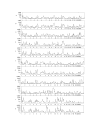Phenotypic and genetic heterogeneity in a genome-wide linkage study of asthma families
- PMID: 15634351
- PMCID: PMC548502
- DOI: 10.1186/1471-2466-5-1
Phenotypic and genetic heterogeneity in a genome-wide linkage study of asthma families
Abstract
Background: Asthma is a complex genetic disease with more than 20 genome-wide scans conducted so far. Regions on almost every chromosome have been linked to asthma and several genes have been associated. However, most of these associations are weak and are still awaiting replication.
Methods: In this study, we conducted a second-stage genome-wide scan with 408 microsatellite markers on 201 asthma-affected sib pair families and defined clinical subgroups to identify phenotype-genotype relations.
Results: The lowest P value for asthma in the total sample was 0.003 on chromosome 11, while several of the clinical subsets reached lower significance levels than in the overall sample. Suggestive evidence for linkage (p = 0.0007) was found for total IgE on chromosomes 1, 7 and again on chromosome 11, as well as for HDM asthma on chromosome 12. Weaker linkage signals could be found on chromosomes 4 and 5 for early onset and HDM, and, newly described, on chromosome 2 for severe asthma and on chromosome 9 for hay fever.
Conclusions: This phenotypic dissection underlines the importance of detailed clinical characterisations and the extreme genetic heterogeneity of asthma.
Figures

References
-
- Allen M, Heinzmann A, Noguchi E, Abecasis G, Broxholme J, Ponting CP, Bhattacharyya S, Tinsley J, Zhang Y, Holt R, Jones EY, Lench N, Carey A, Jones H, Dickens NJ, Dimon C, Nicholls R, Baker C, Xue L, Townsend E, Kabesch M, Weiland SK, Carr D, von Mutius E, Adock IM, Barnes PJ, Lathrop GM, Edwards M, Moffatt MF, Cookson WOCM. Positional cloning of a novel gene influencing asthma from chromosome 2q14. Nat Genet. 2003;35:258–63. doi: 10.1038/ng1256. - DOI - PubMed
-
- Zhang Y, Leaves NI, Anderson GG, Ponting CP, Broxholme J, Holt R, Edser P, Bhattacharyya S, Dunham A, Adcock IM, Pulleyn L, Barnes PJ, Harper JI, Abecasis G, Cardon L, White M, Burton J, Matthews L, Mott R, Ross M, Cox R, Moffatt MF, Cookson WOCM. Positional cloning of a quantitative trait locus on chromosome 13q14 that influences immunoglobulin E levels and asthma. Nat Genet. 2003;34:181–186. doi: 10.1038/ng1153. - DOI - PubMed
-
- Harkonarson H, Bjornsdottir US, Halapi E, Palsson S, Adalsteinsdottir E, Gislason D, Finnbogason G, Gislason T, Kristjansson K, Arnason T, Birkisson I, Frigge ML, Kong A, Gulcher JR, Stefansson K. A Major Susceptibility Gene for Asthma Maps to Chromosome 14q24. Am J Hum Genet. 2002;71:483–91. doi: 10.1086/342205. - DOI - PMC - PubMed
-
- Van Eerdewegh P, Little RD, Dupuis J, Del Mastro RG, Falls K, Simon J, Torry D, Pandit S, McKenny J, Braunschweiger K, Walsh A, Liu Z, Hayward B, Folz C, Manning SP, Bawa A, Saracino L, Thackston M, Benchekroun Y, Capparell N, Wang M, Adair R, Feng Y, Dubois JA, FitzGerald MG, Huang H, Gibson R, Allen KM, PedN A, Danzig MR, Umland SP, Egan RW, Cuss FM, Rorke S, Clough JB, Holloway JW, Holgate ST, Keith TP. Association of the ADAM33 gene with asthma and bronchial hyperresponsiveness. Nature. 2002;418:426–30. doi: 10.1038/nature00878. - DOI - PubMed
Publication types
MeSH terms
LinkOut - more resources
Full Text Sources
Medical

